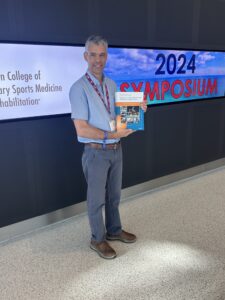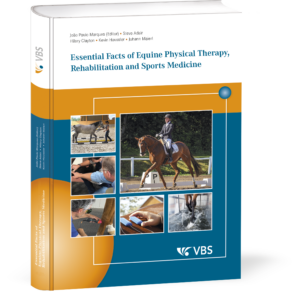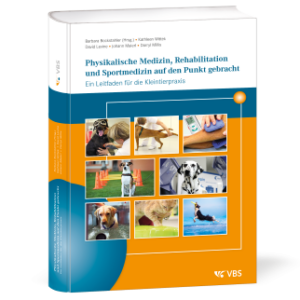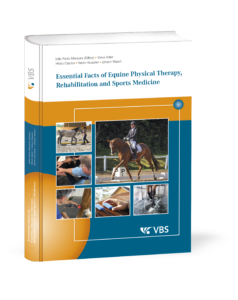Investiere in Dich und Dein Team!
Ihr seid es wert!
Jeder Tag ist eine Gelegenheit, sich zu verbessern. Seid heute besser als gestern und bedenkt, dass morgen noch besser seid als heute!
CCRP
CERP
CCFT
VMPT
Jetzt verfügbar!
Einführung eines bahnbrechenden Fachbuchs zur Physiotherapie, Rehabilitation und Sportmedizin für Pferde!
Mit Beiträgen von über 80 renommierten Experten stellt dieses Buch einen Höhepunkt des Wissens in diesem Fachgebiet dar. Das umfassende Werk wurde von erfahrenen Tierärzten und Physiotherapeuten verfasst, die maßgeblich zur Gesundheit und Leistungsfähigkeit von Pferden beigetragen haben.
João Paulo Marques, der herausgebende Autor, zählt zu den führenden Spezialisten auf diesem Gebiet und verfügt über langjährige Erfahrung im Hochleistungssport, unter anderem in verschiedenen Funktionen bei der FEI sowie bei den Olympischen Spielen.
Diese wertvolle Ressource enthält zudem die Beiträge angesehener Universitätsprofessoren, die akademisches Know-how aus aller Welt einbringen. Es dient als Nachschlagewerk und wird auch als Lehrbuch für Studierende der Veterinärmedizin und Fachleute, die sich auf Physiotherapie, Rehabilitation und Sportmedizin spezialisiert haben, empfohlen.
Dieses von zahlreichen Universitäten weltweit empfohlende Buch bietet einzigartige Einblicke in die Gesundheit und Leistungsfähigkeit von Pferden. Es folgt einem interaktiven Lernansatz, der den Leser durch prägnante Texte, wesentliche Fakten und wissenschaftliche Highlights führt.
Mit mehr als 1000 Abbildungen illustriert und durch Lernvideos ergänzt, bietet es eine dynamische und fesselnde Lernerfahrung, die das Wissen von Experten aus aller Welt in ein wertvolles und umfassendes Format umwandelt.
Ob Sie nun ein erfahrener Tierarzt, eine Tierarzthelferin oder eine andere Fachkraft im veterinärmedizinischen Sektor, ein Humanphysiotherapeut mit Interesse an Rehabilitation von Pferden oder ein Trainer, der Verletzungen vorbeugen möchte – dieses Buch ist eine unverzichtbare Ressource. Vom Sport- bis zum Freizeitpferd werden alle Aspekte der Gesundheit und Leistungsfähigkeit von Pferden umfassend behandelt.
Das Lesen und Studieren dieses Buches verspricht nicht nur fachliche Fortbildung, sondern auch einen tiefen Einblick in die Welt der Physiotherapie, Rehabilitation und Sportmedizin für Pferde.
Erweitern Sie Ihre Fachbibliothek um dieses essentielle Werk!
Dr. Beate Egner
DVM, PhD

Wir freuen uns, Dr. João Paulo Marques, den geschätzten Herausgeber des bahnbrechenden neuen Fachbuchs „Essential Facts of Equine Physical Therapy, Rehabilitation, and Sport Medicine“ sowie ein angesehenes Mitglied unserer CERP-Fakultät, zu seiner Ernennung zum Teamleiter der Physiotherapeuten für Pferde bei den Olympischen und Paralympischen Spielen 2024 zu beglückwünschen.
Physikalische Medizin, Rehabilitation und Sportmedizin für Tiere
Kontinuierliche berufliche Fort- und Weiterbildung (CPD) ist für Ihre berufliche Entwicklung unabhängig von Ihrem derzeitigen Wissensstand von zentraler Bedeutung. Unsere Fort- und Weiterbildungen erweitern Ihre Kompetenzen, setzen neue Schwerpunkte und halten Sie auf dem sich schnell entwickelnden Gebiet der Physiotherapie, Rehabilitation und Sportmedizin bei Tieren auf dem neuesten Stand.
Die Investition in veterinärmedizinische Fort- und Weiterbildung ist eine wertvolle und langfristig gewinnbringende Entscheidung. Bedenken Sie die Vorteile für Ihr ganzes Team, denn erweiterte Fertigkeiten und Kompetenzen tragen zu höherer Effizienz, besseren Behandlungsergebnissen und damit einer positiven wirtschaftlichen Entwicklung bei.







